An introduction to mind maps so you can start evaluating how they can simplify, facilitate and improve your life in various areas and aspects.
First things first
Let's see four ways to represent the same set of information, in this case the things to be provided for a barbecue.
BARBECUE IN SPEECH FORMAT (PROSE):
"For the barbecue we will need a sound system, the guitar and song book, a deck of cards, the paddleball set and a ball, plus things to serve: plates, cutlery, glasses, napkins, toothpicks. Also don't forget to bring tables and chairs, if you don't have them there."
BARBECUE AS A LIST OF ITEMS:
For the BBQ:
- Dishes
- Cutlery
- Glasses
- Napkins
- Toothpicks
- Tables
- Chairs
- Sound system
- Acoustic guitar
- Song book
- Deck of cards
- Paddleball
- Ball
BARBECUE ON A MIND MAP, NOT ILLUSTRATED:
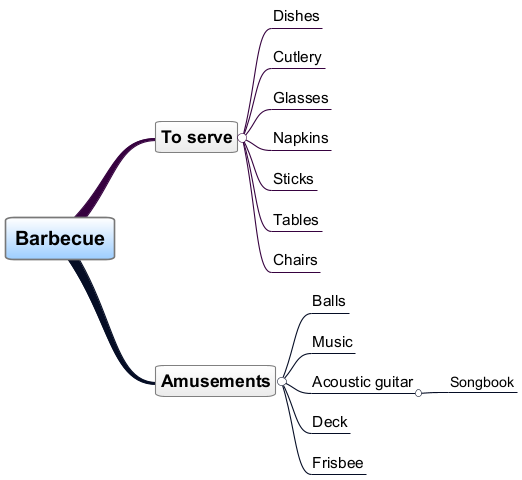
BARBECUE IN ILLUSTRATED MIND MAP (partially):
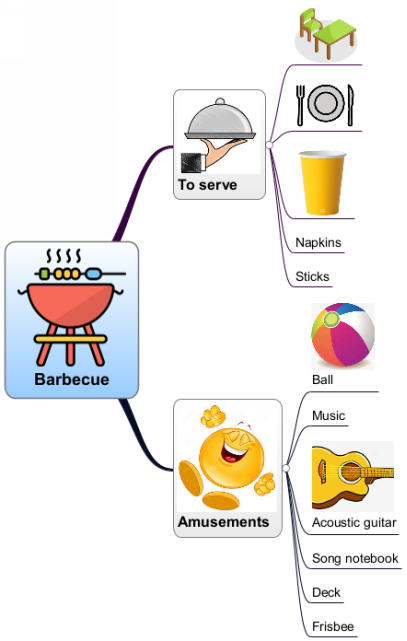
Characterization
Mind maps are essentially hierarchical (tree) diagrams that represent information and knowledge in a way that is:
- textual, illustrated, or both
- synthetic
- organized and leveled
How to "read" a mind map
Some people find a mind map “strange" the first time they see one, mainly because of how they try to look at and understand it.. Just as we don't look at a text as a whole, but read one word or passage at a time, the best way to understand a new mind map for us is to read one topic at a time, starting at its root.
The pace at which this is done depends on our knowledge of the content and consequently on the response time of our comprehension: familiar issues are recognized more quickly, while new or lesser-known topics require more dedication to each component.
When you first look at a mind map, also check if there is any sequence in the topics. If the map is facing one way, it will be read from top to bottom. If it is radial, typically the first topic will be above the right side, running clockwise.
In the mind map below, note the following:
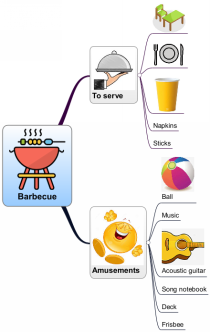
- A mind map is made up of topics linked by lines.
- Each topic can contain text, an illustration, or both.
- There is a central topic, also called title or root, which has subtopics connected to the root topic by the lines. Each subtopic in turn can have its own subtopics, resulting in a hierarchical or tree organization.
- The topic hierarchy defines levels with increasing degrees of detail and specificity: the central topic is the most generic, and the leaves are more specific. Formatting often supports this organization: lines get thinner and fonts smaller. The following figure shows a visualization of the levels.
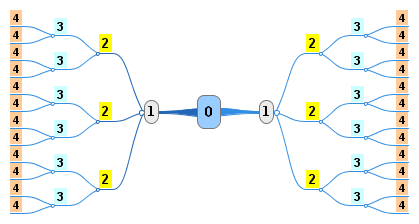
Also note:
- The minimization of prepositions, articles, and other linguistic elements used purely for syntax and not essential for understanding.
- The categorization or grouping of ideas into blocks ("To serve", "Diversions"), which define an organization and levels of ideas, allowing the contextualization of thought and preserving relationships with the rest.
Now do a test. Think of a barbecue, then planning a barbecue: what would you rather keep in mind? Of the four ways listed above, which is the most comfortable, perhaps the most fluid, for you to think about barbecue planning?
How mind maps came about
Mind maps were created by the Englishman Tony Buzan, and one of the main publications on the subject is the book The Mind Map Book – How to Use Radiant Thinking to Maximize Your Brain's Untapped Potential, in an exquisite edition. The book has no translation into Portuguese.
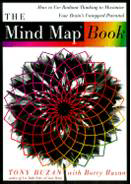
Ways of making
Mind maps can be made in two ways: by hand or using a software. Handmade, they can range from a quick sketch of some notes to colorful and neat, as in the examples below.
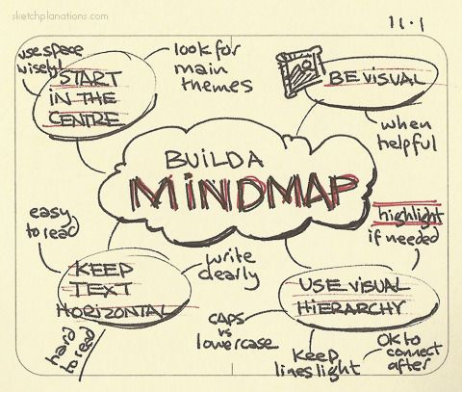
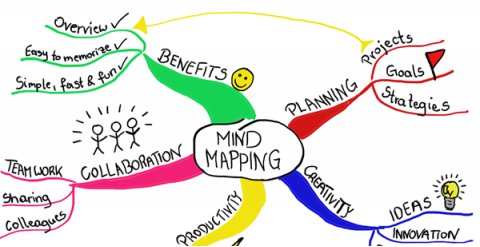
There are several mind mapping programs on the market, each with its own style. The following mind map was created with Coggle.
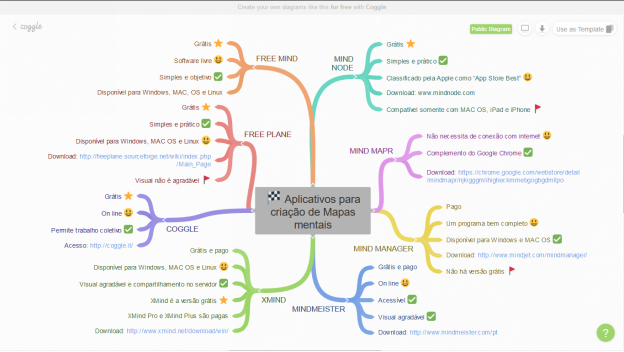
The barbecue mind maps were made with EasyMapper.
Some apps try to get closer to the classic style of hand-drawn mind maps, like the one in the following picture:
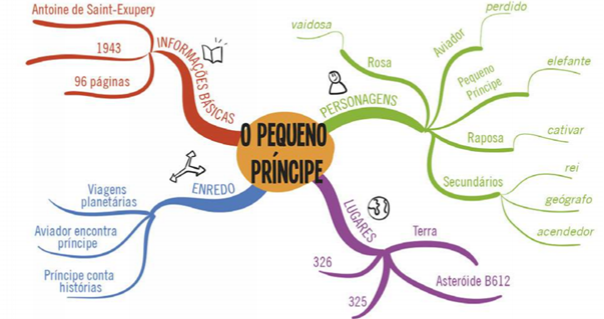
It is usually possible to recognize in which program a mind map was made just by its style.
The differences between mind mapping on paper and using software are similar to those between writing on paper and using a word processor: ease and flexibility of change are generally greater, as well as the ease of reproduction. “Generally” because the criteria may vary depending on the type of mind map — some, such as the one shown below (from The Mind Map Book), have artistic characteristics that are not easily reproduced with software.
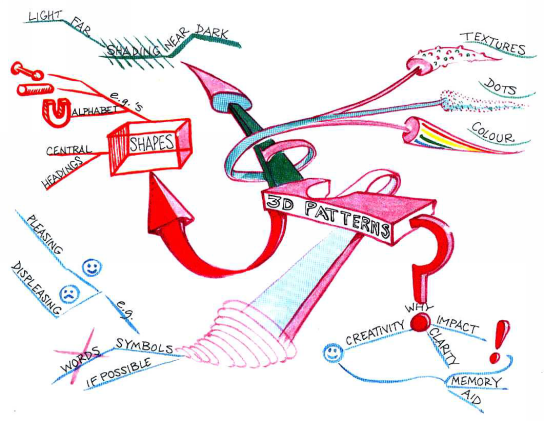
More examples
For you to further enrich your "mental model" about what mind maps are and what they are for, let's show you some examples in different contexts. Due to space limitations, the content of each mind map in some cases is partial. The examples aim to have familiar content, so you can focus more on the structure and don't have to devote a lot of conscious attention to understanding.
Basic questions
Asking is a way of provoking the mind to seek answers. By putting the six basic questions together, we can have a better understanding and perspective on a situation.
When we have something to do, we can start from that mind map by inserting answers into each branch, with each answer as a subtopic.
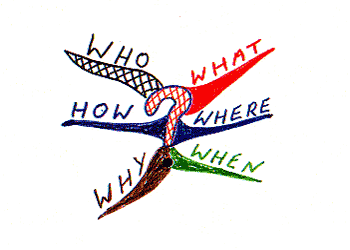
Syllabus
Every product or work involving information, such as videos, articles, books, presentations and lectures, courses or classes, thesies, dissertations and monographs, have a content. This content usually has a central idea and details of that idea, in the form of language or discourse. If we ask what the content "talks about", the answer will be in the form of topics related to the central idea.
For example, the central idea of this work is making decisions about mind maps. It explores what they are, offers examples and case studies, and guides the reader through their first experiences. The remaining sections elaborate on these themes.
This central idea, its subtopics, and their subtopics form a structure, more specifically a hierarchy. As mind maps are hierarchical, this structure can be worked on a mind map, in two senses: mapping the structure of an existing work or defining the structure of a new work, for later detailing.
This structure is called syllabus. It is more commonly used in teaching, in courses and subjects, but in fact any work that has content can have its structure explained as a syllabus.
One of its formats is shown below. We've seen some syllabi in list form without organization, and others without line breaks.
Syllabus – Mathematics (partial)
1. Sets
1.1. Representation and relations: membership, inclusion and equality.
1.2. Sets: Operations of union, intersection, difference, complement and Cartesian product.
1.3. Number Sets and Operations: Natural, Integer, Rational, Irrational and Real.
2. Functions
2.1. Definition of function, domain, range, graphs, increase, and decrease.
2.2. Functions: polynomial, absolute value, rational, exponential and logarithmic.
2.3. Sequences: Arithmetic Progressions and Geometric Progressions.
See below a representation of this same syllabus in a mind map:
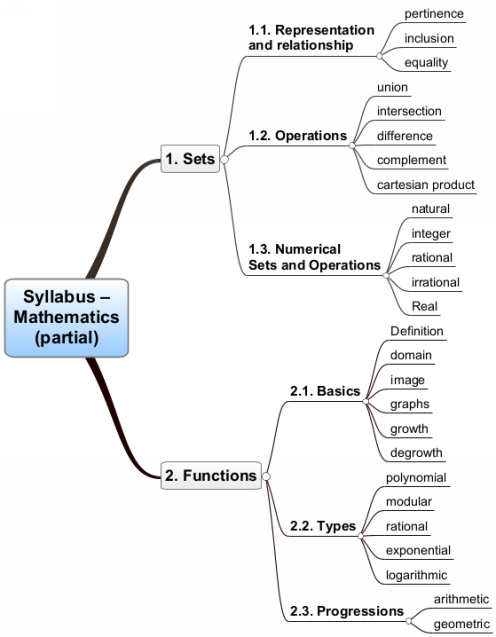
In addition to making the outline easier to visualize, this format—when developed using software—greatly increases productivity, especially during its creation, when the structure typically undergoes many changes before becoming stable.
Learn more about this use of mind maps in the article Syllabus in a mind map: multiple uses
English rules for time notation
The English language has many rules, and being able to consult them quickly increases learning productivity. If they are synthesized and with representative examples, even better. The mind map below is just a possibility.
Compare studying these rules in a textbook or through the mind map below.
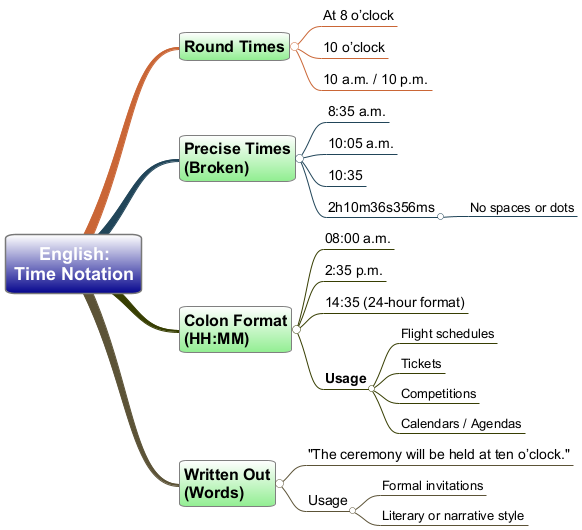
Geography
The mind map below describes two of the six Brazilian morphoclimatic domains.
This is a case where a table structure has been represented in a mind map: each branch corresponds to a row in the table, and the columns are repeated on each branch.
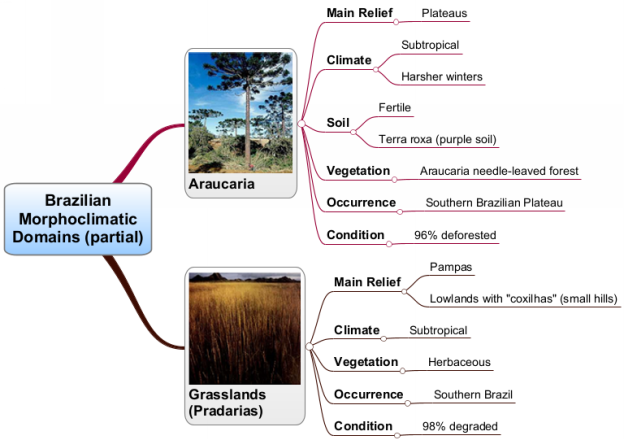
Recipes
Cooking recipes are often presented in a semi-structured format, which often prioritizes reducing the footprint rather than readability and understanding. See how an omelet recipe looks in a mind map (my recipe…).
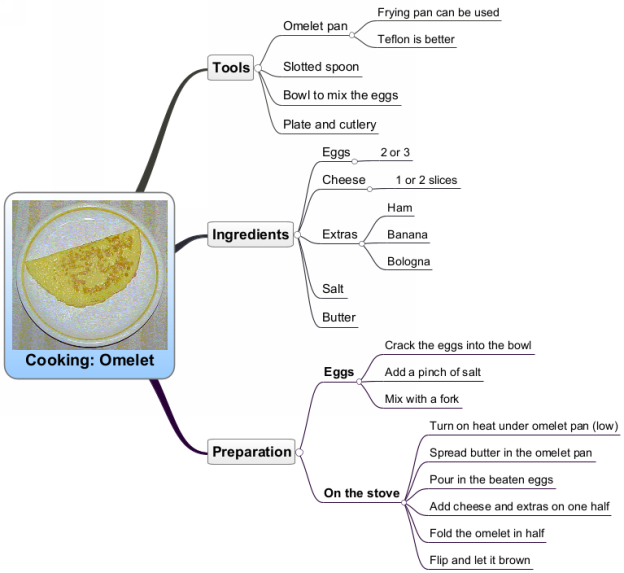
In this format, a cooking recipe represented in a mind map is much easier to follow, especially for those who don't have much experience. First, you check what resources you will need. Then, the ingredients. Having everything you need, just follow the preparation instructions.
The green triangle indicates that the topic is contracted, that is, it has further detailed subtopics that are not shown.

